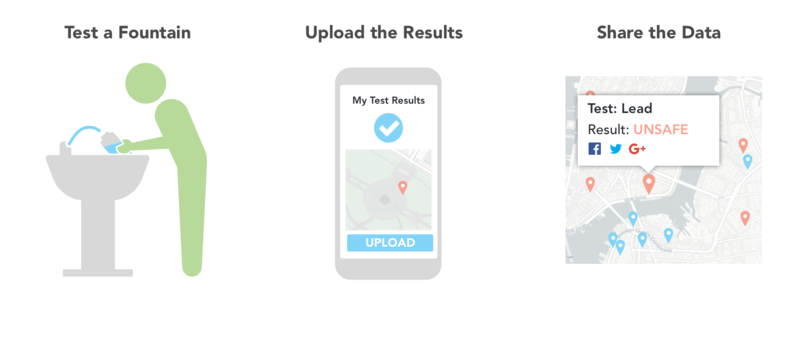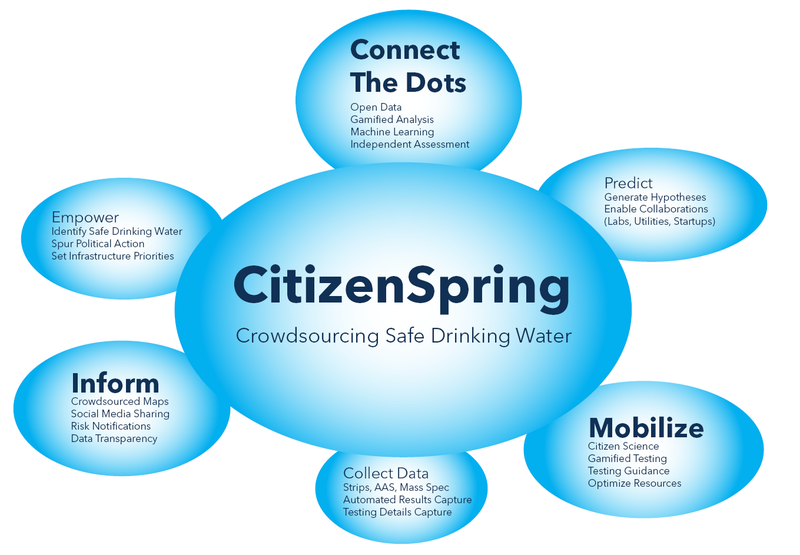I've been working with a small group of volunteers on a project to test NYC public drinking fountains for lead and I'm happy to announce that our website is live and tracking lead test results as they come in! https://www.citizenspring.org/
We're now looking for ways to engage communities that can help test local drinking fountains and upload the results to our map. The process is pretty simple and our web forms walk you through how to get a free lead test kit, collect scientifically accurate samples, and upload the results so everyone can see which fountains are safe and which ones have toxic levels of lead. To get started, just sign up to be a tester on our website https://www.citizenspring.org/#join
We're thinking it might be a good class science project to go out and test a fountain before they turn off for the winter or perhaps of interest to parent groups or running groups, but I'm interested to hear your ideas for how to engage communities to help put our parks & playground drinking fountains on the map!

A little background: As you may know, in 2017 WNYC reported brain-damaging levels of lead in NYC school drinking fountains. Some of these drinking fountains had lead levels so high that the water exceeded the EPA's hazardous waste classification, making it illegal to even dump it into the street. What's potentially even worse is that NYC is currently not reporting any testing of public drinking fountains in parks & playgrounds. This means kids (and pregnant & breastfeeding mothers) may be exposed to toxic levels of lead every time they go to the park to play, which is a real bummer because lead exposure can cause permanent brain damage.
We think that this is just the type of problem citizen science and open data can address... if a few people in every neighborhood test a fountain and share the data on a public map we can all keep our families safe from lead tainted water.
We'd love to hear your feedback and ideas!


5 Comments
Interesting! could you post more details on what kind of lead test is used and what your sampling protocol is? thanks! looking forward to learning more.
Is this a question? Click here to post it to the Questions page.
Reply to this comment...
Log in to comment
Hi @nshapiro, We started out using computer vision to analyze simple strip tests like you can get at your local hardware store for their ease of use, immediacy of results and low cost. However, after doing a controlled study comparing the strip tests to lab-tested samples (results published at AWWA ACE17 https://docs.google.com/presentation/d/1tWOEIZ0yhNs9g3sK5bJtTwx7ldODiI5RVTMbwwwxxHw/edit?usp=sharing) we concluded that these tests were insufficiently reliable. So we instead pivoted to utilize a rigorous early AM 1st & 2nd draw sampling with 1-2 minute flush protocol and processing the samples in a lab. By utilizing web-forms on the tester's smart phone, we're automatically capturing the time of day, duration of flush, geolocation, and camera images to assure a high level of data integrity and traceability. In the bigger picture, I see crowdsourced testing/mapping of our public resources as being somewhat independent of any one test type and can imagine it changing as new technologies develop. It may even be possible to think about a consortium of different test types being utilized to optimize resources so that faster/lower-cost tests could help more quickly identify issues in specific locations and points in time that could then be followed up with more detailed testing methods. Hopefully that answers your question, but happy to discuss more. Cheers, Sean
Is this a question? Click here to post it to the Questions page.
Reply to this comment...
Log in to comment
Very cool! it would be great to have more of that info on your sampling and analyzing approach on your website as most project don't have as advanced a method as yours--it would maybe help for buy-in. We have built some colorimetric analysis apps that have been validated in an exposure chamber (results are under review rn) for HCHO with good success. here's the code if its of interest https://github.com/publiclab/SmART-Form . having multiple test types imho would be tricky especially on the low cost side of things, but with your tenacity maybe it could work out! Thanks for the detailed response and god luck as it moves forward!
Reply to this comment...
Log in to comment
Hi @smmontgom , I enjoyed reading your poster on your previous sampling protocol. Thank you for sharing! I am a big fan of publishing data in this way, and creating a public map about public water fountains sidesteps the privacy issues faced when trying to share environmental health data collected in people's homes.
Could you please share more information about the sampling method you currently use?
It's good practice to share these details transparently without requiring someone to sign up as a beta tester.
Is this a question? Click here to post it to the Questions page.
Reply to this comment...
Log in to comment
Hi @liz, Thanks for your compliments. Our testing utilizes a standard sample collection kit with 2 bottles [1st draw, flush, 2nd draw] that is then tested by a lab certified by the NYC DEP. I agree with you about adding more info to our website, including nitty gritty details about testing process as well as more big picture info for the uninitiated to understand the issue with lead in drinking water, how it got there, and what the health effects are. We just finished the website, webforms, and backend infrastructure to get the whole thing live updating with data as it comes in. It's just a small group of us working nights and weekends since about this time last year, but we certainly have a host of improvements and goals for the future. Thanks for your helpful comments to improve transparency!
Reply to this comment...
Log in to comment
Login to comment.